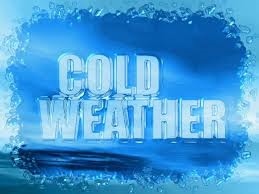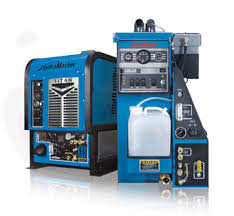I know here in the Southeast we have been faced with some unusually cold conditions lately. The number of consecutive cold days is giving cleaners new challenges to be aware of. Here is a good article on some steps taken while operating your truckmount in very cold conditions.
Thanks,
Jonathan Stutts – CleanSource
Simple Suggestions for Operating Your Truckmount in Extremely Cold Conditions
written by Doyle Bloss – HydraMaster
It is easy to say just wait until its warmer when faced with sub-zero temperatures outside, but for carpet cleaners in Alaska, Minnesota, Michigan, Maine, and more, you would be out of operation too long. Now, with extremely cold temperatures blanketing across 2/3 of the nation, it would be a good time to review some simple suggestions for extreme cold operations of your truckmount. After all, there may just be some jobs too good to delay, and it may be important to keep that income stream steadier.
- Because of the extreme cold the vehicles should be kept running (unless they are equipped with electric engine heaters). Keep the vehicle closed with the heater running until you are ready to clean.
- The first thing you want to do is transport all your wands and tools into the heated home or building. Do NOT put them outside of your vehicle. Do NOT leave them outside on the porch. They can freeze in seconds if the weather is cold enough.
- For most optimal cold weather cleaning, you will want to transport your own water to the job with a fresh water tank. Avoiding the need to hook up to an outside faucet and deal with the potential liability of turning on a potentially frozen outside water source is a great start.
- If you do not have a fresh water tank, and have to hook up to the customer water consider hooking to a bathroom or janitor closet faucet indoors using a faucet adapter kit. Until you get the water flowing from the water source to the truckmount consider starting with warm water for a few minutes. Use warm inlet water to aid in the inlet hose to keep it from freezing. However keep in mind that many solution pump seals are rated at 180ºF so be cautious in using extreme hot water to the water box on your truckmount – don’t overheat the inlet of the pump. If you have to use an outside faucet, the key is to keep the water flowing, even when your truckmount is not demanding more fresh water. One idea is put a Y splitter on the garden hose at the van feed and the run another garden hose off of the Y to the customer’s lawn (keep away from any sidewalks or driveways) and then crack that valve to keep just small stream of water flowing. That will keep the water flowing constantly through your incoming water hose but still keep pressure in it to fill your water box.
- Many cleaners will run a water supply hose and a solution hose inside of a length of 2” vacuum hose. The solution hose helps keep the water supply hose from freezing and the vacuum hose keeps the hoses from lying directly on the frozen ground.
- When ready to clean start the truckmount and make sure you preheat your solution water before connecting any solution hose or starting to flow water. Take your solution (pressure) hoses into the job last. Get them hooked up and water flowing as soon as possible, even if it means leaving a technician at the wand or tool.
- Connect the hoses and start cleaning right away. Avoid stopping for too long. Proper preparation of the areas to be cleaned will minimize breaks during cleaning. Move furniture before starting cleaning when possible.
- The doors of the vehicle still have to be kept open during operation of slide in cleaning equipment for proper operation; direct drive units can be run with the doors closed.
- When you finish cleaning pick up hoses as soon as possible and return them to the vehicle which should be running with the heater on then load your tools into the vehicle. The supply hose will have to be drained and hoses and tools will need to be freeze guarded at the end of the day unless you have heated parking.
- Pull the wand or tool trigger for an extra couple seconds after shutting off the pump to relieve pressure inside the hose & the tool (wand/ upholstery tool/ rotary tool).
- The less water/ fluid in the hose and the wand, the less likely it is to freeze and cause a burst failure
- This is good practice in hot or cold.
- Be more cognizant of where you run your hoses. They will melt snow/ ice while in operation, but after you’re gone they will leave ice for the next unsuspecting person who walks by.
- If you were connected to the customer’s house water supply remember to replace protective covers over the faucets if they were covered and try to minimize water drainage from hoses on walkways






